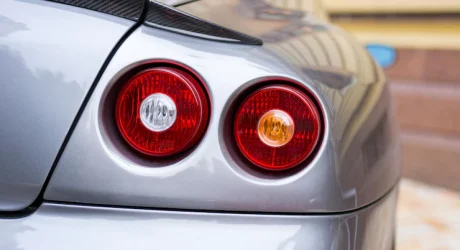All types of fleets have the same thing in common: fuel. Regardless of its size, you have to pay for fuel. It is one of the most expensive costs borne by fleets all over the world. There are no alternatives for it, and its price keeps going up daily. Every fleet aspires to lower its fuel consumption while having maximum productivity levels. Naturally, you cannot reduce your driving and delivery time.
So, like most owners and operators, you search for practical strategies to lower everyday fuel consumption. Cost-effectiveness is the key here- after all, the goal is to reduce your bills, not increase them.
Besides, a good businessman always tries to get the best for his company at the lowest price. The current market is also facing a reduction in margins and a regular surge in prices, making it all the more difficult to reduce expenses in the best way possible.
Every fleet management company wants to use the most optimum solutions to battle these problems. So, what can you do to reduce your fuel consumption? In this article, we have discussed five easy ways to cut down on fuel and increase fuel economy. Keep reading to know what they are!
Ensure That Your Fleet Is Well Maintained

Just like we need to be healthy to be our best, most productive selves, a vehicle needs to be maintained for it to be efficient and reliable. Vehicle maintenance also increases the lifespan of your truck or car. This makes it stronger and it also lasts for a long!
For example, you must keep an eye on your fleet’s tires. Make sure you choose the right set of tires for your fleet vehicles. If the pressure in the tire drops below 40 percent, your fuel consumption will be increased by a whopping 8 percent!
Therefore, checking and maintaining tire pressure is very crucial for you to improve your fuel economy. Like this, there are many other vehicular activities you must keep checking on. The thumb rule for maintenance is to check your fleet’s tire pressure and change its air filters every 15,000 miles.
Issues with the car’s air filtration system will also consume more fuel than usual. Having anomalies in your truck will not only decrease your fuel economy but also put you in danger. On the bright side, a well-oiled vehicle is more likely to increase fuel efficiency.
Assign Tasks To Close-By Vehicles
Sometimes, drivers get assigned tasks that are hours away from their location. This phenomenon usually occurs when managers do not look at where the drivers are when they are selected. As a result, there may be many drivers near the area but get ignored, wasting a lot of time and fuel.
Therefore, you should assign tasks to drivers closest to the location. For this, we recommend using a GPS tracker with real-time tracking. You can calculate the distance between the area in question and the nearest driver. Dispatching the nearest driver saves you time and fuel. It also improves customer satisfaction as they receive their goods quickly!
Observe Your Drivers’ Behaviour

Keeping an eye on the driver’s behavior is crucial for reasons beyond fuel consumption. For one, you will know if your driver employs risky driving habits and drives rashly. It poses a safety threat to them.
It also earns your fleet an unsavory reputation in the market. Additionally, behaviors like speeding, harsh braking, and acceleration negatively impact the fuel economy. These dangerous activities decrease fuel economy by over 20 percent.
By keeping tabs on their driving activity, you can prevent your drivers from getting into an accident and save a lot of fuel. It helps with many other functions too. All of them lead to lesser fuel consumption. For example, if your driver is taking a longer route for a delivery, you can advise them to take a shorter way and provide them with alternative roads.
If your vehicle goes beyond the authorized areas and takes unnecessary trips, you know where the fuel is going. Engine idling is another source of fuel consumption. You can keep track of this as well! By receiving a notification whenever the vehicle remains stationary, you can remind your drivers to turn off the engine. Engine idling causes an enormous amount of fuel wastage. By encouraging your drivers to adopt better work ethics, you can reduce your carbon footprint.
Reduce The Weight
Too much load on a car increases the aerodynamic drag, which decreases fuel efficiency. This behavior, in turn, increases your fuel consumption. Of course, all fleet managers want their drivers to be prepared for anything and have solutions for every situation possible.
At the same time, they should be encouraged to carry only what they need. Traveling light is always better- it increases your speed, and consumes lesser fuel. If it does not have the extra composite parts of the vehicle for an emergency, it reduces the overall weight of the truck or car. You can always facilitate an emergency helpline for emergencies. So, get rid of the extra cargo carriers in your vehicle. Traveling light is crucial to reduce fuel waste.
Read Also: Key Questions To Ask When Looking For Driver Risk Management Solutions
Using A GPS Tracker

You can resolve almost all fuel usage problems with a fleet GPS tracker. You can map out the fastest way for your vehicle with the aid of a GPS tracker. With this device, you can also improvise routes if your plans suddenly alter. Additionally, it aids in route optimization and scheduling, improving fuel efficiency.
You can avoid a lot of issues and additional expenses by keeping an eye on your driving style and engine idling as mentioned above. A GPS tracker can handle all of this. GPS trackers maintain a precise, thorough record of driving behavior, engine idling, fuel consumption, and other factors.
Conclusion
Fuel is precious and you should use it in the most economical way possible. With these few tips, you can reduce a good amount of your fuel consumption. By reducing fuel wastage, you also reduce greenhouse gas emissions and make the environment safer. You can also use fleet management programs to help reduce not only expenses but the workload of a fleet.
We also recommend encouraging good driving behavior with rewards and benefits. This will motivate your drivers to improve their activity and a certain level of safe and sustainable driving.
Additionals:




























